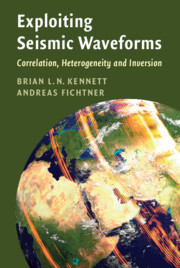Book contents
- Frontmatter
- Dedication
- Contents
- Preface
- 1 Introduction
- Part I Building the Seismic Wavefield
- Part II Correlation Wavefields
- Part III Interaction of Seismic Waves with Heterogeneity
- Part IV Inversion for Earth Structure
- 14 Inference for Structure
- 15 Gradient Methods for Nonlinear Inversion
- 16 Adjoint Methods and Sensitivity Analysis
- 17 Waveform Inversion of Event Data
- 18 Waveform Inversion of Correlation Data
- 19 New Directions
- Appendix Table of Notation
- Bibliography
- Index
17 - Waveform Inversion of Event Data
from Part IV - Inversion for Earth Structure
Published online by Cambridge University Press: 16 November 2020
- Frontmatter
- Dedication
- Contents
- Preface
- 1 Introduction
- Part I Building the Seismic Wavefield
- Part II Correlation Wavefields
- Part III Interaction of Seismic Waves with Heterogeneity
- Part IV Inversion for Earth Structure
- 14 Inference for Structure
- 15 Gradient Methods for Nonlinear Inversion
- 16 Adjoint Methods and Sensitivity Analysis
- 17 Waveform Inversion of Event Data
- 18 Waveform Inversion of Correlation Data
- 19 New Directions
- Appendix Table of Notation
- Bibliography
- Index
Summary
We here describe the process of waveform inversion for earthquake data, by reference to inversion for 3-D structure in seismic wavespeed and density in the eastern Mediterranean region using numerical simulation with the spectral element technique. Such waveform inversion needs to start from a good initial model, using low frequencies in the first stage. As the inversion proceeds higher frequencies and additional data can be to incorporated to achieve model refinement. We also examine the issues of practical resolution assessment, and validation of proposed models.
Information
- Type
- Chapter
- Information
- Exploiting Seismic WaveformsCorrelation, Heterogeneity and Inversion, pp. 398 - 412Publisher: Cambridge University PressPrint publication year: 2020
